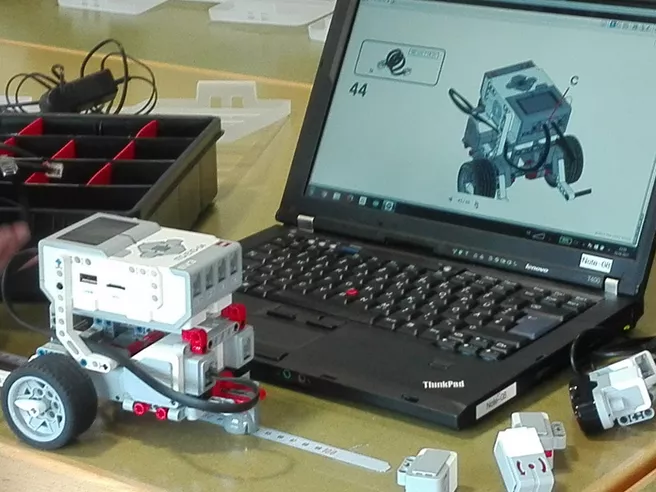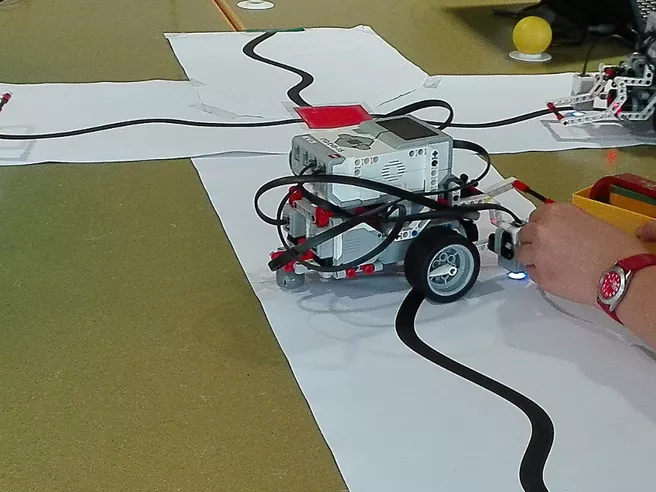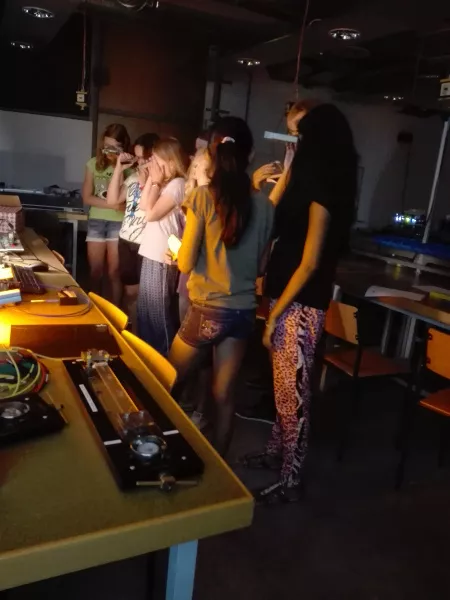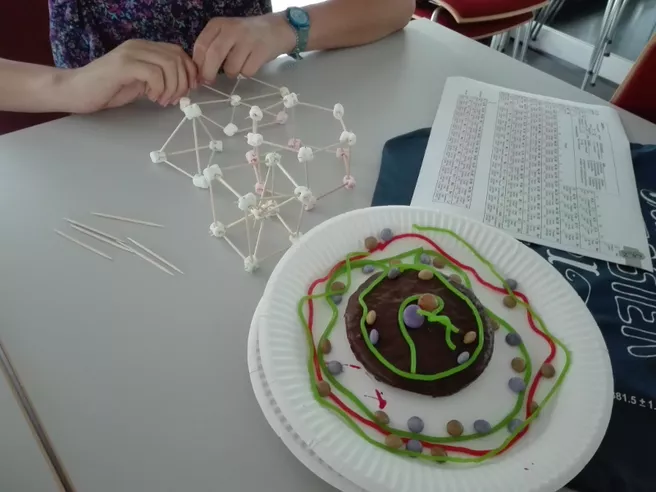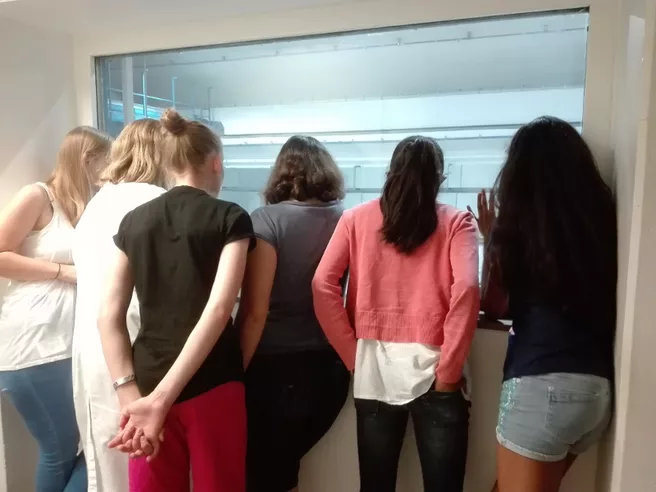Eight highly motivated girls participated in the program "Physics and technology made easy" within the framework of the "Mädchen machen Technik" initiative.
Andreas Hauptner from the Physics Department explained at the beginning of the three-day workshop some laws of optics such as refraction and diffraction and the wave-particle duality, which is also valid for neutrons. The laws were illustrated by many optical experiments of the pupils with lenses and slits and finally by grinding their own acrylic prism. In the afternoon, the girls then assembled their first robot, which was surprisingly fast despite the hot August sun and for which they needed only little support from the two caretakers from the Gerda-Stetter foundation. In this first afternoon the participants were able to familiarize themselves with the basic programming steps.
The next morning they went on with experiments on optics, this time with colored light and experiments, how the different wavelengths behave during the passage through a lens or a slit. The optical experiments ended with the construction of a cardboard-based spectrophotometer. After the now very popular lunch in the canteen, the programming of the small robots continued, which turned out to be a really difficult task: They should follow a black wave line, bypass an obstacle, pick up a ball and deliver it in another place. The girls needed more support for this challenge, because the robots often did quite different things than desired. Even if not all were successful - they have learned a lot.
The third day was devoted entirely to the neutrons. The eleven-year-old girls had not heard much about the structure of atoms or the function of nuclear fission, so Marina Ganeva first explained these basics. The girls deepened their new insights by imitating the Bohr model on gingerbread with sweets, later even different crystal structures. After lunch they went to the already longed visit of the research reactor, what meant, however, because of the age, to go only to the visitor window and to the gallery of the neutron guide hall. For the conclusion, the MLZ scientist Marina Ganeva had prepared a crossword puzzle with terms from nuclear physics and a quiz, in which correct answers, even if they were only guessed, were rewarded with small profits.
